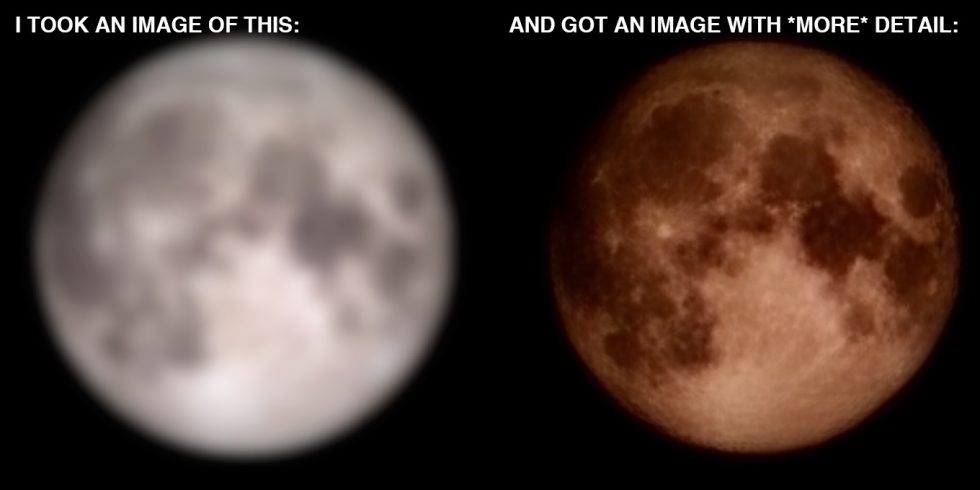
Enlarge / Samsung's Galaxy S23 ad, showing the moon photography mode.
If you take a photo of the moon on a Samsung device, it will return a detailed photo of the moon. Some people are mad about this.
The issue is that Samsung's software fakes some details the camera can't really see, leading a Reddit user called ibreakphotos to accuse the company of "faking" moon photos. The user's post claims to be able to trick Samsung's moon detection, and it went viral enough that Samsung's press site had to respond.
Samsung's incredibly niche "Moon Mode" will do certain photo processing if you point your smartphone at the moon. In 2020, the Galaxy S20 Ultra launched with a "100x Space Zoom" (it was really 30x) with this moon feature as one of its marketing gimmicks. The mode is still heavily featured in Samsung's marketing, as you can see in this Galaxy S23 ad, which shows someone with a huge, tripod-mounted telescope being jealous of the supposedly incredible moon photos a pocketable Galaxy phone can take.
We've known how this feature works for two years now—Samsung's camera app contains AI functionality specifically for moon photos—though we did get a bit more detail in Samsung's latest post. The Reddit post claimed that this AI system can be tricked, with ibreakphotos saying that you can take a picture of the moon, blur and compress all the detail out of it in Photoshop, and then take a picture of the monitor, and the Samsung phone will add the detail back. The camera was allegedly caught making up details that didn't exist at all. Couple this with AI being a hot topic, and the upvotes for faked moon photos started rolling in.
On one hand, using AI to make up detail is true of all smartphone photography. Small cameras make for bad photos. From a phone to a DSLR to the James Webb Telescope, bigger cameras are better. They simply take in more light and detail. Smartphones have some of the tiniest camera lenses on Earth, so they need a lot of software to produce photos that are anywhere near reasonable in quality.
"Computational photography" is the phrase used in the industry. Generally, many photos are quickly taken after you press the shutter button (and even before you press the shutter button!). These photos are aligned into a single photo, cleaned up, de-noised, run through a bunch of AI filters, compressed, and saved to your flash storage as a rough approximation of what you were pointing your phone at. Smartphone manufacturers have to throw as much software at the problem as possible because no one wants a phone with a giant, protruding camera lens, and normal smartphone camera hardware can't keep up.

Enlarge / On the left, Redditor ibreakphotos takes a picture of a computer screen featuring a blurred, clipped, compressed photo of the moon, and on the right, Samsung makes up a whole bunch of detail.
But lighting aside, the moon basically always looks the same to everyone. While it spins, the Earth spins, and the two spin around each other; gravitational forces put the moon in a "synchronous rotation" so we always see the same side of the moon, and it only "wobbles" relative to Earth. If you make an incredibly niche camera mode for your smartphone specifically targeted at only moon photography, you can do a lot of fun AI tricks with it.